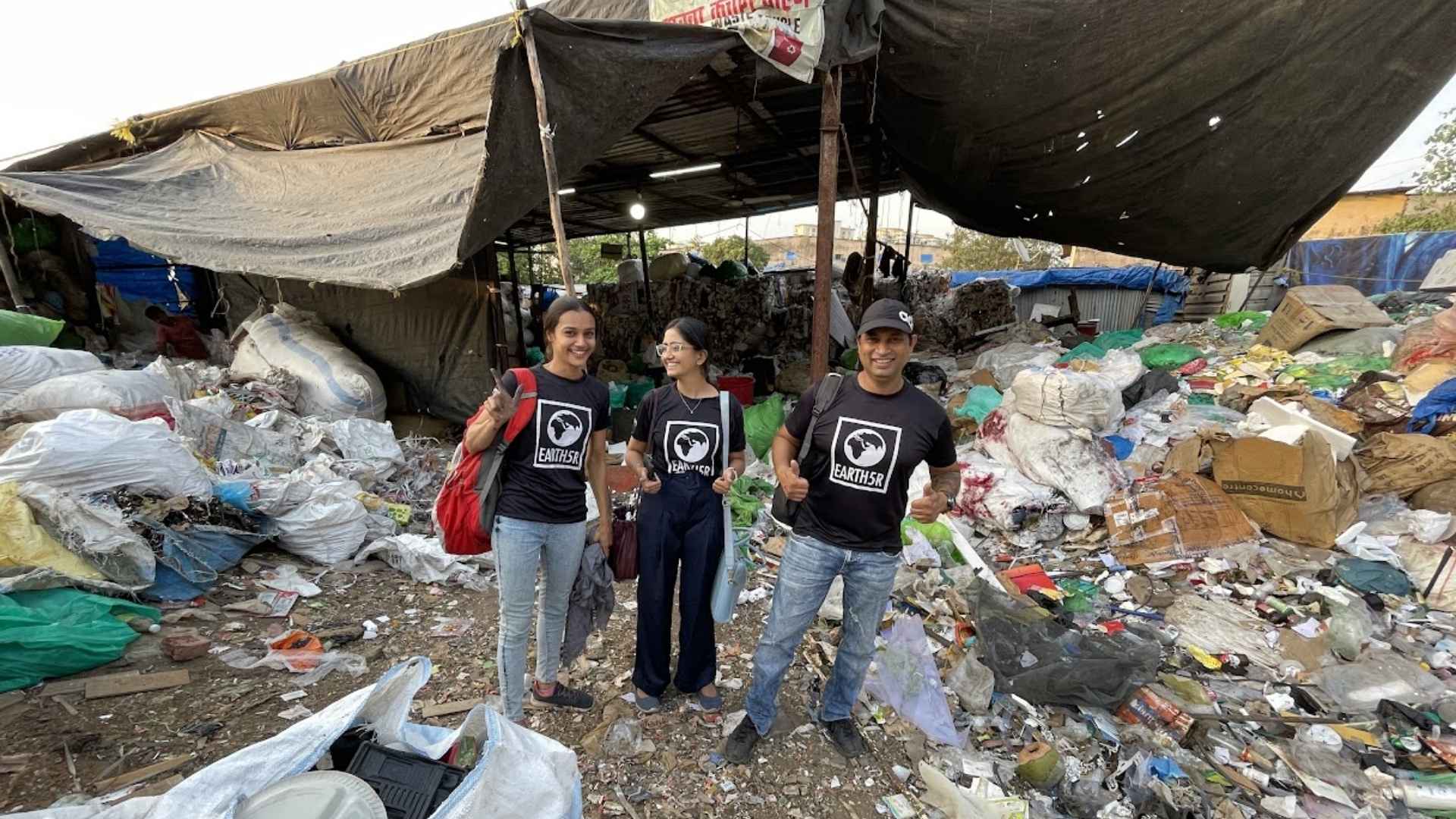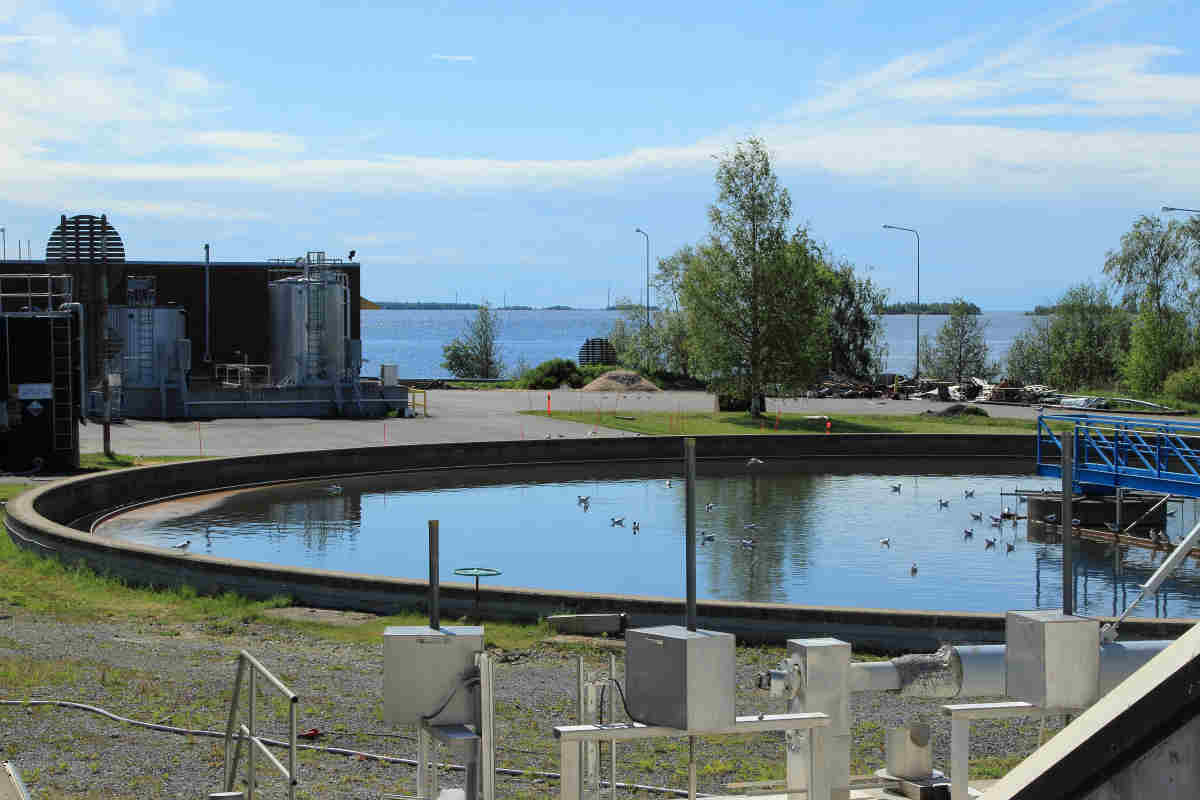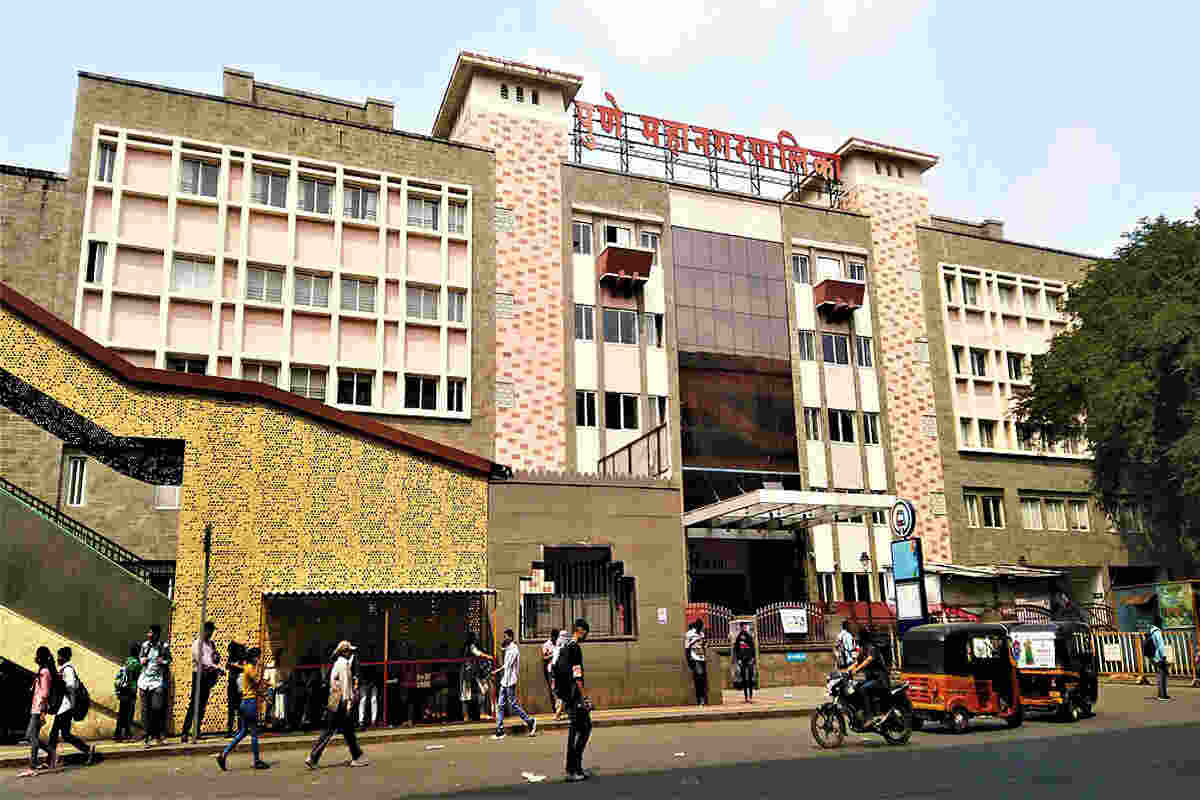A Sustainable Approach to the Urban Waste Crisis
In the heart of every bustling city, a silent crisis brews—waste mismanagement. While urban centers thrive as hubs of economic and social activity, they also generate an unprecedented amount of waste, much of which ends up in landfills, water bodies, or open dumping grounds.
According to the World Bank, over 2.01 billion metric tons of municipal solid waste is produced annually, with this number expected to rise by 70% by 2050 if left unchecked. The mismanagement of urban waste is not merely an aesthetic or logistical issue; it is a profound environmental and public health emergency.
In cities like Mumbai, New York, and Jakarta, inefficient waste segregation results in mountains of unprocessed garbage accumulating in landfills, leading to toxic leachate, methane emissions, and contamination of air and water sources.
The Need for Systematic Waste Segregation
The fundamental flaw in urban waste management lies in its linear model—produce, consume, discard—which prioritizes convenience over sustainability. Waste segregation at the source, a practice where biodegradable, recyclable, and hazardous waste is separated before disposal, is the foundation of a circular economy.
Research by the International Solid Waste Association (ISWA) suggests that proper segregation can divert up to 85% of municipal waste away from landfills by enabling effective composting, recycling, and safe disposal of hazardous materials.
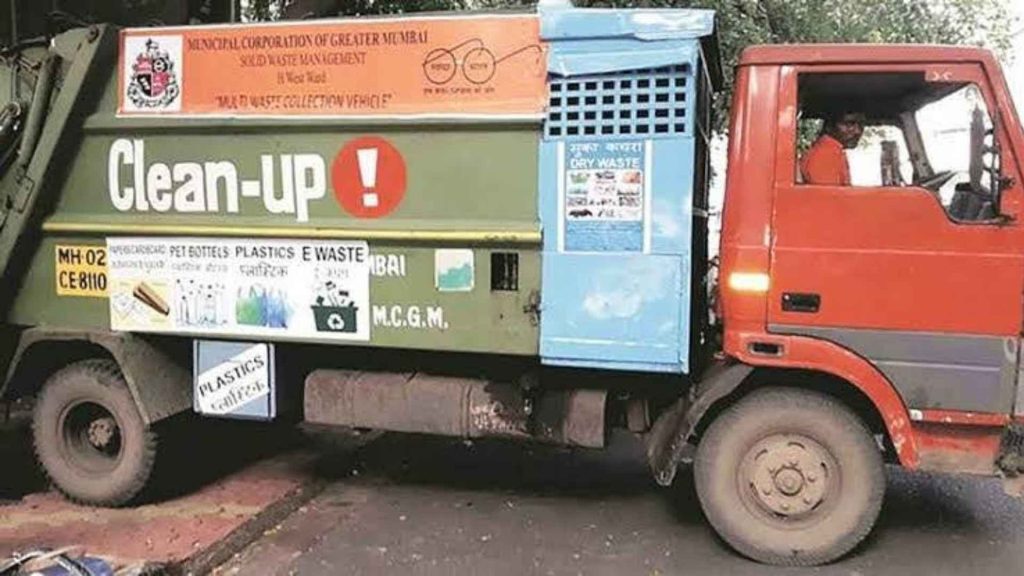
On the other hand, India generates over 62 million tons of waste annually, but only 60% is collected, and less than 20% is treated or recycled due to poor segregation practices. Without a structured approach, cities will continue to drown in their own waste, threatening public health and accelerating climate change.
The Science Behind Waste Segregation: A Critical Look at Urban Waste Management
A city is often judged by its skyline, its infrastructure, and its economic prowess. But beneath the towering buildings and bustling streets, another reality unfolds—mountains of waste, accumulating at an alarming rate. While urbanization has fueled economic growth, it has also exacerbated the waste crisis, making scientific waste segregation a necessity rather than an afterthought. The failure to properly categorize and process waste does not just affect the cleanliness of a city; it has profound implications for the environment, human health, and climate change.
A comprehensive analysis by the World Bank found that urban waste is composed of approximately 44% organic waste, 17% recyclables, 12% hazardous waste, and the remaining portion is miscellaneous materials. However, without proper segregation, even recyclable and biodegradable waste becomes contaminated, rendering it unusable and forcing cities to rely on landfills.
What Happens to Waste? The Science of Decomposition
Once discarded, waste embarks on a complex chemical and biological journey. Organic waste decomposes through microbial action, producing carbon dioxide (CO₂), methane (CH₄), and other gases. While composting in controlled environments promotes the release of carbon dioxide, which is significantly less harmful than methane, landfill decomposition leads to methane production, a greenhouse gas that is 80 times more potent than CO₂ in trapping heat over two decades.
Non-biodegradable waste, particularly plastics, undergoes photo-degradation rather than decomposition. When exposed to sunlight, plastics break into microplastics rather than disappearing entirely. These particles infiltrate ecosystems, making their way into marine life, food chains, and even human bodies.
The Hidden Costs of Mixed Waste: Environmental Consequences
The impact on soil and water systems is equally alarming. When waste is dumped into landfills without segregation, toxic leachate—a liquid formed when rainwater percolates through waste—seeps into groundwater reserves. This contamination has been linked to high levels of arsenic, lead, and nitrates in drinking water, contributing to chronic health conditions such as kidney failure and neurological disorders.
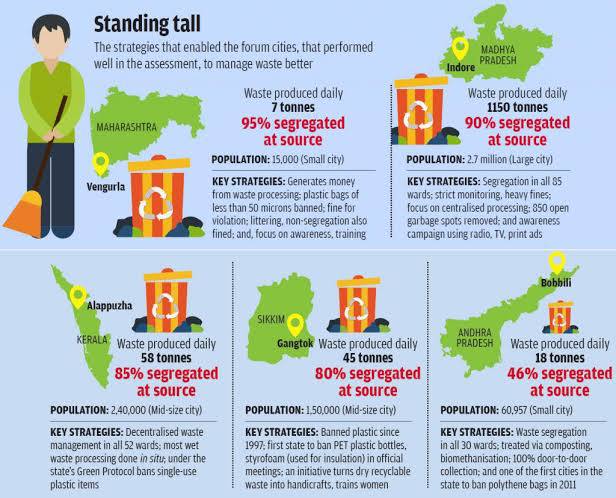
The image highlights waste segregation strategies in different Indian cities, showcasing their effectiveness in managing daily waste.
Perhaps the most devastating consequence of mixed waste is its effect on marine ecosystems. The United Nations estimates that over 8 million tons of plastic waste enter the oceans each year, leading to massive “garbage patches” the size of continents. Marine life, from fish to seabirds, frequently ingest plastic, mistaking it for food. In one tragic case, a beached whale in the Philippines was found with over 40 kilograms of plastic waste in its stomach, an all-too-common occurrence in today’s oceans.
The Carbon Footprint of Landfills vs. Segregated Waste Management
Landfills are one of the largest sources of anthropogenic methane emissions, significantly contributing to climate change. According to the Intergovernmental Panel on Climate Change (IPCC), landfills account for 12% of global methane emissions, a number that could be drastically reduced with proper waste segregation.
Countries that implement systematic segregation and waste-to-energy programs have demonstrated lower carbon footprints. Germany, for example, diverts nearly 66% of its municipal waste away from landfills, utilizing anaerobic digestion and incineration with energy recovery to minimize emissions. On the contrary, countries with poor segregation policies—such as India and Brazil—struggle with growing landfill sites, many of which emit more greenhouse gases than entire industrial sectors.
Segregated waste management systems not only reduce emissions but also transform waste into a resource. Composting, for instance, reduces methane emissions by up to 90% compared to landfill disposal. Similarly, recycling aluminum reduces energy consumption by 95% compared to producing new aluminum from raw materials.
Economic & Social Benefits of Earth5R’s Waste Segregation Model: A Path to Inclusive Growth
Waste is often seen as a burden, an inevitable byproduct of modern urban life that must be managed at great cost. However, Earth5R’s waste segregation model challenges this perception, proving that waste, when managed efficiently, can be a source of economic opportunity, job creation, and social empowerment.
Empowering Waste Workers: A New Economic Ecosystem
One example is the Pune Municipal Corporation’s collaboration with Earth5R, where waste workers were provided training in plastic segregation, bio-waste composting, and hazardous waste handling. Within a year, their incomes rose by 250%, and over 3,500 waste workers gained access to social security benefits. This model is not unique to India. In Bogotá, Colombia, waste picker cooperatives were officially recognized by the government, leading to a 40% increase in incomes and improved working conditions for over 12,000 waste workers.
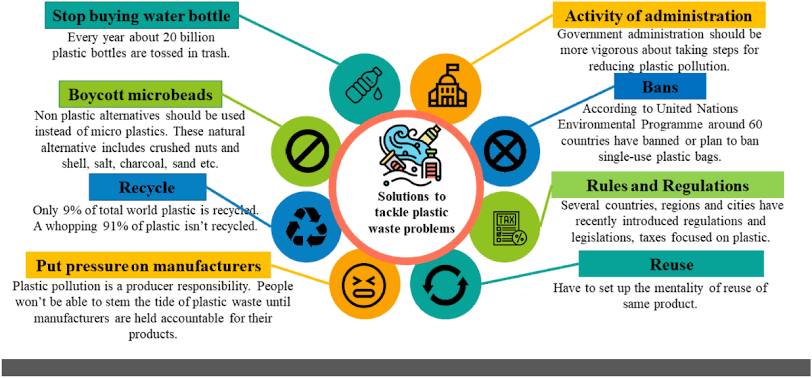
The image presents various solutions to tackle plastic waste, emphasizing recycling, bans, and administrative actions.
The impact of such integration extends beyond financial stability. A study by the International Labour Organization (ILO) found that when informal waste workers are included in organized waste segregation programs, waste recovery rates improve by 60%, benefiting both the environment and the economy. The second image presents various solutions to tackle plastic waste, emphasizing recycling, bans, and administrative actions.
The Financial Feasibility of Decentralized Waste Management
A 2021 report by the World Bank revealed that cities lose billions of dollars annually due to inefficient waste management. In contrast, regions that adopt segregation-at-source policies and decentralized waste processing have seen their waste management costs drop by up to 40%. In Zürich, Switzerland, a pay-as-you-throw system, where waste disposal fees are determined by the amount of non-segregated waste generated, reduced landfill waste by 65% and saved the city $200 million annually.
Earth5R’s decentralized waste hubs follow a similar cost-saving principle. Instead of relying on long-distance transportation of waste to central processing plants, waste is processed at local hubs, reducing logistics costs by 30% and increasing recycling efficiency by 50%. In Bengaluru’s Indiranagar district, where this model was implemented, municipal spending on waste collection dropped by 35% within a year, and revenues from recycling increased by 20%.
Government Collaborations and Policy Support
In France, the Extended Producer Responsibility (EPR) policy has made corporations financially responsible for the waste generated by their products, leading to a 70% increase in recycling rates for packaging materials.
A striking example of government-private collaboration is the Mumbai Smart Waste Initiative, where Earth5R partnered with the Brihanmumbai Municipal Corporation (BMC) and several corporate sponsors. The program introduced waste segregation bins in residential complexes, AI-driven tracking of waste movement, and incentives for households segregating waste efficiently.
Similar policies have been successful in countries like South Korea, where the mandatory food waste recycling program has diverted 95% of food waste away from landfills, generating $600 million annually through compost and biogas production. Such initiatives demonstrate that with the right policies and financial incentives, waste segregation can become a self-sustaining system rather than a municipal burden.
From Waste to Wealth: The Future of Waste Segregation as an Economic Engine
The success of Earth5R’s waste segregation model is a testament to the fact that sustainable waste management is not just an environmental obligation but also a driver of economic and social progress. By integrating informal waste workers, making waste management financially viable, and fostering government collaborations, this model offers a scalable blueprint for cities worldwide.
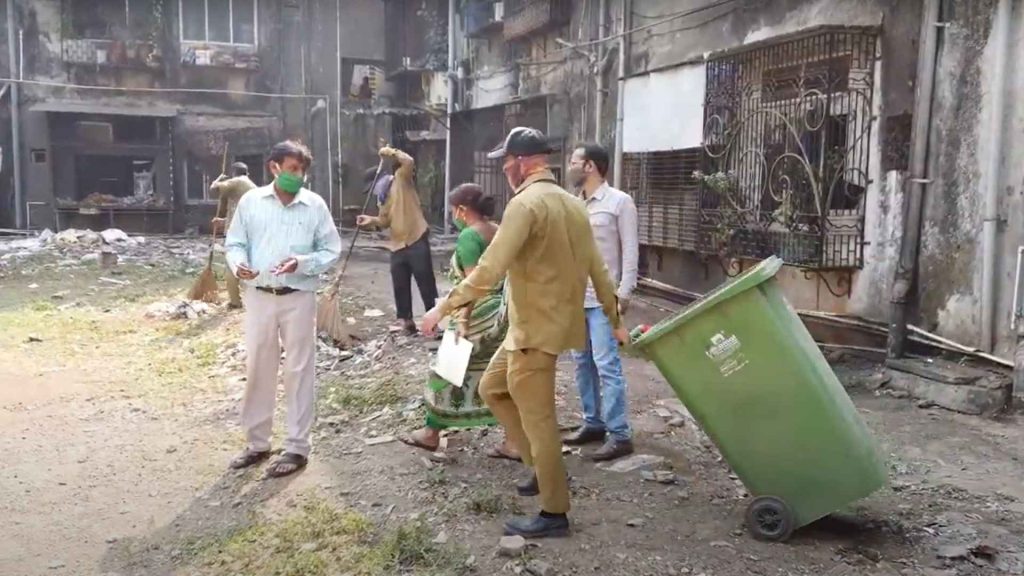
As urban populations continue to grow and waste generation increases, the choice is clear: either continue down the path of landfill overflow and environmental degradation or embrace a system where waste becomes an opportunity for economic inclusion, job creation, and financial sustainability. With its evidence-backed approach and measurable impact, Earth5R is proving that the latter is not just possible—it is already happening.
Case studies from Earth5R : Real life impact
Earth5R has extensively documented its Large-Scale Waste Segregation Model for Urban Neighborhoods through various articles on its website. These publications provide detailed insights into the model’s components, implementation strategies, and the positive outcomes observed in urban settings.
Earth5R’s Zero-Waste Society Framework: A Community-Centric Approach to Waste Segregation
It outlines the organization’s emphasis on community involvement in waste management. The framework is built upon the 5Rs—Reduce, Reuse, Recycle, Recover, and Rethink—guiding sustainable waste practices. By empowering local communities to take ownership of waste segregation, Earth5R integrates social, economic, and environmental dimensions into its approach. Educational initiatives and citizen engagement programs are highlighted as key strategies to promote proper waste segregation and sustainable habits.
How to Set Up an Effective Community Waste Segregation Program
Earth5R shares practical steps for establishing community-driven waste segregation initiatives. The article emphasizes the importance of large-scale cleanup drives and systematic waste data analysis to understand pollution patterns. By involving volunteers in examining collected waste, particularly PET bottles and multilayer packaging, the organization identifies critical areas for intervention and educates communities on the significance of waste segregation.
Earth5R’s Sustainable Livelihoods Model through Upcycling and Micro-Enterprises
Here, it discusses how the organization transforms waste into valuable products, creating economic opportunities for local communities. By teaching individuals to upcycle waste into functional items and establish micro-enterprises, Earth5R not only diverts waste from landfills but also fosters a circular income cycle where waste becomes a source of livelihood.
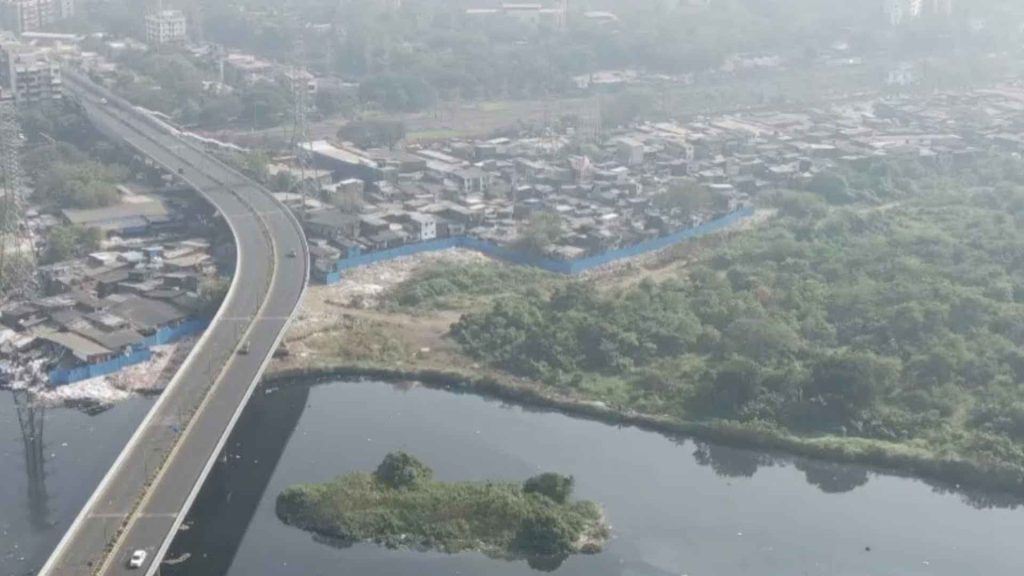
The “Powai Lake Cleanup and Waste Segregation Program by Earth5R” serves as a case study demonstrating the effectiveness of Earth5R’s model. Through educational events and community engagement, the program achieved a 35% reduction in waste dumping around Powai Lake, indicating a significant shift in citizen responsibility toward waste disposal. The campaign’s success underscores the model’s replicability and scalability in high-density urban areas facing similar challenges.
These articles collectively highlight Earth5R’s comprehensive approach to waste segregation in urban neighborhoods, focusing on community empowerment, practical implementation strategies, economic benefits through upcycling, and measurable environmental impact.
Challenges & Future Prospects: Scaling Earth5R’s Waste Segregation Model for a Sustainable Future
Challenges in Large-Scale Implementation
One of the biggest barriers to effective waste segregation is resistance to behavioral change. Waste management is not just about infrastructure and policies; it is deeply linked to human habits and perceptions. Many urban residents, despite being aware of the environmental benefits of segregation, fail to separate their waste due to inconvenience, lack of immediate incentives, or simple inertia.
Even in cities where public awareness campaigns have been conducted, adoption rates have remained low without strict enforcement and economic incentives. In South Korea, for instance, waste segregation only became effective after the “Pay-as-You-Throw” (PAYT) system was introduced, penalizing households that did not comply.
For example, India’s Solid Waste Management Rules (2016) mandate that all households and businesses segregate waste, but a 2022 audit revealed that less than 20% of urban municipalities had the infrastructure or regulatory capacity to enforce these laws effectively. Without a strong policy framework and strict accountability measures, large-scale implementation of waste segregation remains fragmented and inconsistent.
Future Innovations & Scalability of Earth5R’s Model
The role of AI, blockchain, and IoT (Internet of Things) in waste management is becoming increasingly significant. AI-powered waste sorting systems, like those implemented in Sweden and Germany, use machine learning to identify and separate different waste materials, improving efficiency and reducing human error.
Blockchain technology is also being explored for tracking waste from its source to recycling plants, ensuring transparency and accountability. In Finland, blockchain-based waste tracking systems have reduced illegal dumping by 30% and improved recycling rates by 40%.
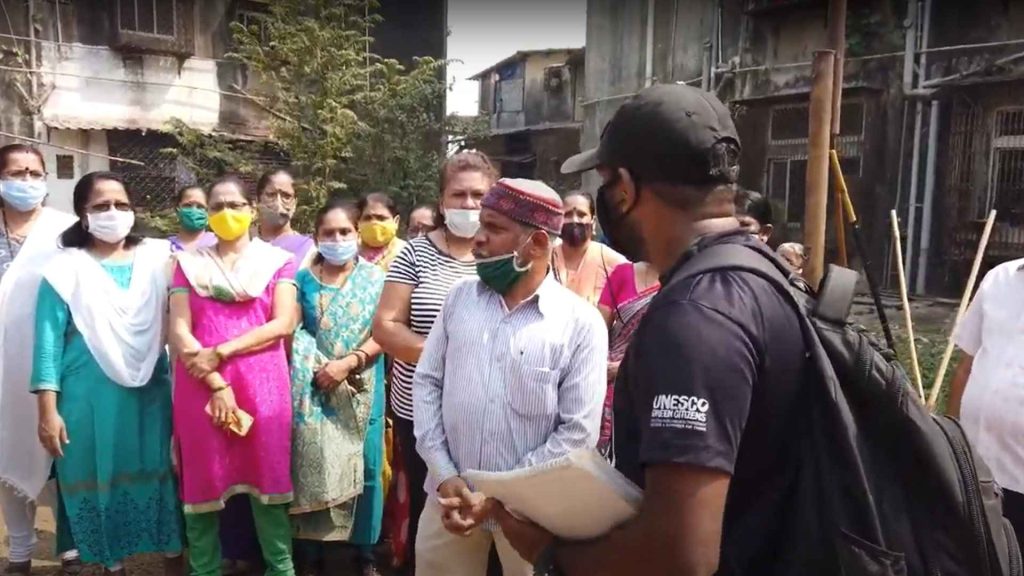
Another crucial factor in scalability is the model’s adaptability to different urban settings. What works in a high-density city like Mumbai may not be directly applicable in smaller towns or low-income urban areas. Colombia’s waste segregation programs, for example, were adapted for both high-income and low-income neighborhoods, increasing overall waste recovery rates by 50% in just three years.
Towards a Future of Sustainable Waste Management
The road to large-scale waste segregation is not without obstacles, but Earth5R’s model proves that with the right mix of technology, community engagement, and policy support, cities can transform their waste crisis into an opportunity for sustainability and economic growth. As urban populations continue to expand and waste generation increases, the need for scalable, research-driven solutions becomes more urgent than ever.
The future of waste management lies in integrating human behavior with technological innovation, ensuring that every piece of waste is treated not as garbage but as a resource. While challenges remain, the success of Earth5R’s model offers a hopeful glimpse into a world where waste is not a problem, but a part of the solution.
The Future of Waste Segregation is Now
As the world grapples with an escalating waste crisis, the evidence is clear—waste segregation is not just an environmental necessity but an economic and social imperative. Research findings, case studies, and real-world implementations of Earth5R’s model have demonstrated that systematic waste segregation can reduce pollution, create sustainable livelihoods, and make urban waste management financially viable.
International examples further reinforce this trend—San Francisco’s rigorous segregation policies have led to an 80% reduction in landfill waste, while South Korea’s mandatory food waste recycling program generates over $600 million annually. These numbers underscore a critical message: waste is not just a burden to be managed; it is a resource waiting to be harnessed.
The responsibility now lies with governments, corporations, and communities to embrace waste segregation not as an obligation, but as an opportunity. Policymakers must strengthen enforcement mechanisms, businesses must take accountability for their waste footprint, and individuals must make segregation a daily habit. The transformation of waste management from a failing system to a sustainable solution requires collective action at every level.
The path forward is clear—waste segregation is not just a choice; it is an essential step toward a cleaner, healthier, and more sustainable urban future. The time to act is now.
FAQs on Earth5R’s Large-Scale Waste Segregation Model for Urban Neighborhoods
What is Earth5R’s Large-Scale Waste Segregation Model?
Earth5R’s waste segregation model is a community-driven, technology-enabled system designed to efficiently manage and reduce urban waste. It focuses on decentralized waste segregation hubs, AI-driven waste tracking, and behavioral change initiatives to improve recycling rates and reduce landfill dependency.
Why is waste segregation important for urban neighborhoods?
Urban areas generate massive amounts of waste daily, much of which ends up in landfills or oceans due to improper disposal. Segregation ensures that recyclable and biodegradable waste is processed correctly, reducing environmental pollution, lowering carbon footprints, and supporting circular economies.
How does Earth5R’s model differ from traditional waste management systems?
Unlike conventional waste collection, which often results in mixed waste disposal, Earth5R’s model emphasizes source segregation, decentralized processing, and community engagement. It incorporates AI-based waste tracking, data analytics, and micro-recycling hubs, making waste management more efficient and transparent.
What types of waste does the model segregate?
The model classifies waste into biodegradable (organic), non-biodegradable (plastics, glass, and metals), hazardous (medical, chemical), and recyclable materials. Proper categorization allows for efficient processing, reducing environmental harm and promoting resource recovery.
How does Earth5R encourage communities to adopt waste segregation?
Through awareness programs, reward-based incentives, and digital waste monitoring tools, Earth5R promotes behavioral shifts. It also trains local waste collectors and residents, ensuring that segregation practices become a routine part of daily life.
Does the model work in low-income urban areas?
Yes, Earth5R’s model is designed to be scalable and adaptable. It has been successfully implemented in low-income neighborhoods by integrating informal waste workers, providing them with training, better wages, and safer working conditions.
What role does AI play in the waste segregation model?
AI is used to monitor waste generation patterns, optimize collection routes, and automate sorting at recycling hubs. Machine learning algorithms help classify different types of waste, reducing contamination and improving recycling efficiency.
Can this model reduce landfill waste?
Yes, cities implementing Earth5R’s model have reduced landfill waste by up to 50%. By diverting biodegradable waste for composting and recyclable materials for reuse, the model significantly decreases the volume of waste that ends up in landfills.
What are the economic benefits of this waste segregation model?
The model creates jobs, boosts the recycling industry, and reduces municipal waste management costs. Cities that adopt systematic segregation have seen higher revenues from recycled materials and lower expenses related to waste disposal and landfill maintenance.
How does Earth5R collaborate with governments and businesses?
Earth5R works with municipal corporations, policymakers, and private companies to create customized waste management solutions. It helps corporations meet sustainability goals and advises governments on policy improvements and infrastructure development.
Is waste segregation legally mandated in any countries?
Yes, countries like South Korea, Germany, and Sweden have strict waste segregation laws with financial penalties for non-compliance. In cities like San Francisco, households and businesses are required to separate waste, leading to some of the world’s highest recycling rates.
How does Earth5R track waste movement?
By using blockchain technology and IoT-enabled bins, Earth5R ensures that waste is tracked from households to segregation centers, improving transparency and reducing illegal dumping.
What challenges does the model face in large-scale implementation?
Key challenges include public resistance to behavioral change, lack of infrastructure, inefficient enforcement of waste policies, and funding gaps. However, technology, community participation, and government collaboration can help overcome these hurdles.
Can this model be implemented in rural areas?
Yes, while urban settings generate higher waste volumes, the principles of Earth5R’s model—source segregation, decentralized processing, and community engagement—are applicable in rural areas as well. It has already been tested in semi-urban regions with positive results.
What happens to the segregated waste under this model?
Biodegradable waste is converted into compost or biogas, recyclable materials are sent to processing units, hazardous waste is disposed of safely, and non-recyclables are minimized through sustainable alternatives.
How does this model help tackle marine pollution?
By ensuring that plastic and non-biodegradable waste are properly segregated and processed, Earth5R’s model prevents waste from reaching rivers and oceans, reducing marine pollution and protecting aquatic life.
What are the key policy recommendations for better adoption of this model?
Governments need to enforce stricter segregation laws, provide financial incentives for compliance, invest in smart waste infrastructure, and integrate waste workers into the formal economy. Successful case studies show that a combination of education, regulation, and technology can drive large-scale adoption.
How does waste segregation contribute to carbon footprint reduction?
Landfills emit methane, a greenhouse gas 25 times more potent than CO₂. By diverting waste from landfills through composting, recycling, and energy recovery, Earth5R’s model helps significantly lower carbon emissions.
What can individuals do to support this model?
Individuals can practice proper waste segregation at home, educate their communities, participate in recycling programs, and support businesses that follow sustainable waste management practices. Small actions, when multiplied across neighborhoods, can lead to transformative change.
A Collective Responsibility: The Call to Action for Urban Communities, Policymakers, and Corporations
Waste segregation is not just a responsibility of municipal authorities; it is a shared duty that requires the active participation of communities, businesses, and governments. Without a unified approach, urban waste will continue to overflow into landfills, pollute waterways, and exacerbate climate change. The time for action is now.
Urban Communities: Small Changes, Big Impact
Residents must take ownership of their waste by adopting source segregation at home, participating in community waste programs, and holding local authorities accountable. Simple habits—such as separating biodegradable waste from recyclables, reducing single-use plastics, and composting organic matter—can have a cumulative impact when practiced across thousands of households. Community-led clean-up drives and educational campaigns can also build a culture of sustainability and encourage responsible waste management.
Policymakers: Strengthening Laws and Infrastructure
Governments and municipal bodies must prioritize waste segregation through strong policies, strict enforcement, and better infrastructure. Implementing incentives for waste segregation, imposing fines for non-compliance, and investing in AI-driven waste monitoring systems can drive efficiency in urban waste management. Public-private partnerships should be leveraged to fund decentralized waste processing centers, ensuring that waste is managed locally rather than being dumped in overcrowded landfills.
Corporations: Leading the Shift Toward Circular Economies
Businesses play a crucial role in reducing urban waste by adopting sustainable packaging, implementing take-back programs, and supporting waste segregation initiatives. Corporations must integrate ESG (Environmental, Social, and Governance) goals into their operations, ensuring that their supply chains align with global sustainability standards. Investing in waste-to-resource innovation, supporting informal waste workers, and funding recycling infrastructure can create both economic and environmental value.
The Urgency of Now
The environmental, economic, and social costs of unmanaged waste are too high to ignore. Whether it is a resident segregating their waste, a government enforcing stricter policies, or a business reducing its plastic footprint, every action contributes to a cleaner, healthier, and more sustainable urban future. Earth5R’s model has proven that waste segregation is not just possible but also profitable and impactful. Now, it is up to us to scale it.
– Authored by Mridu Mishra

